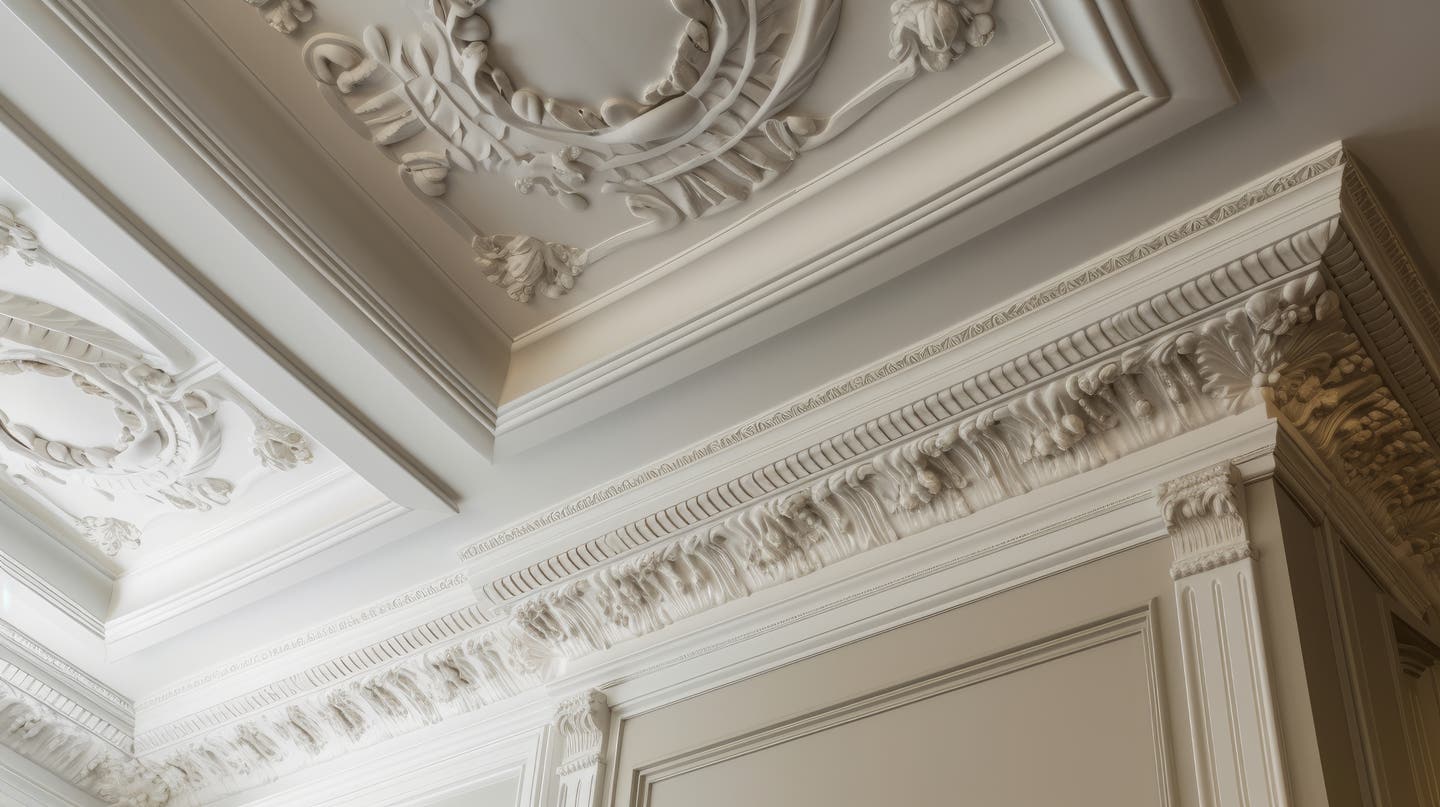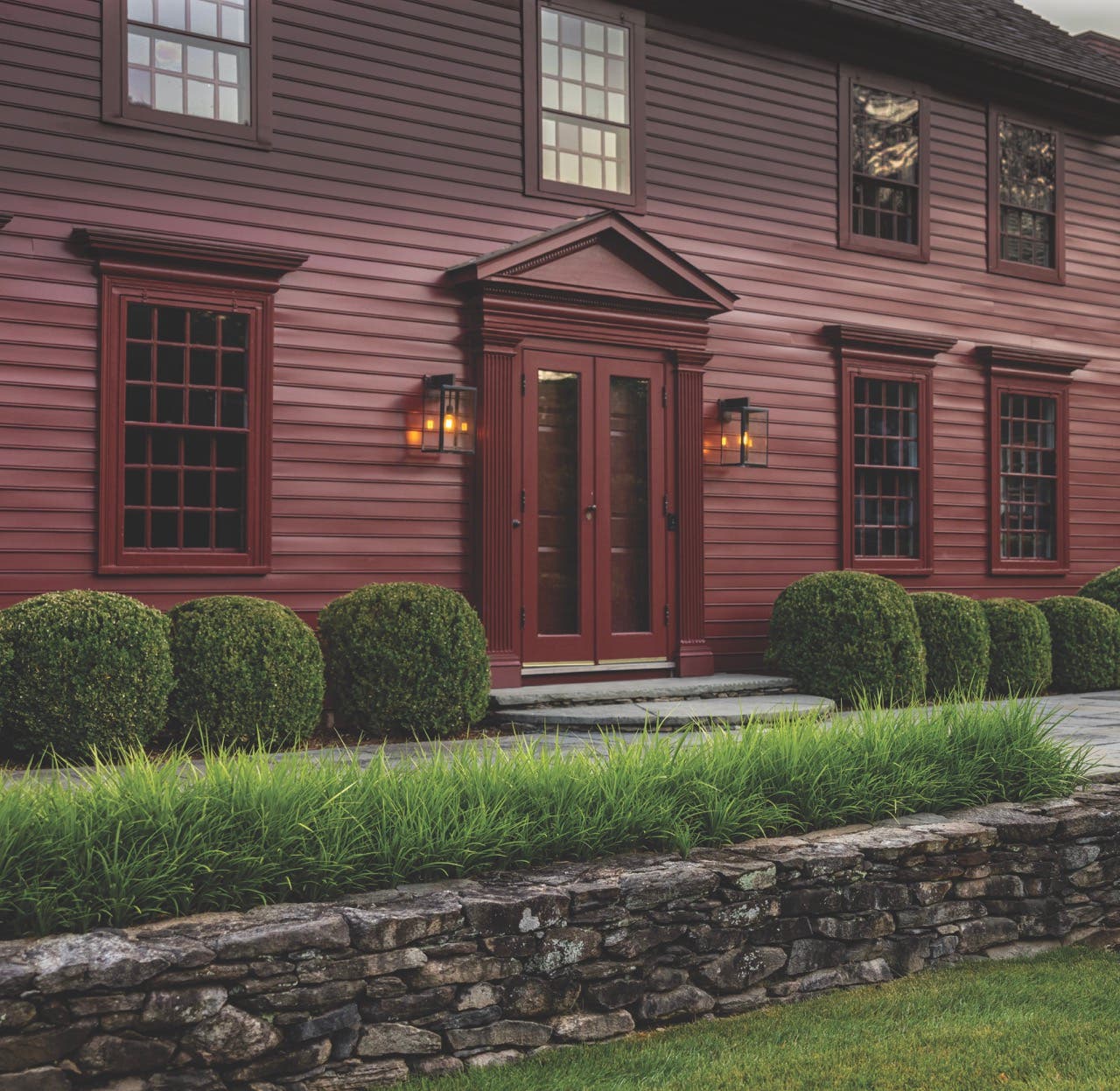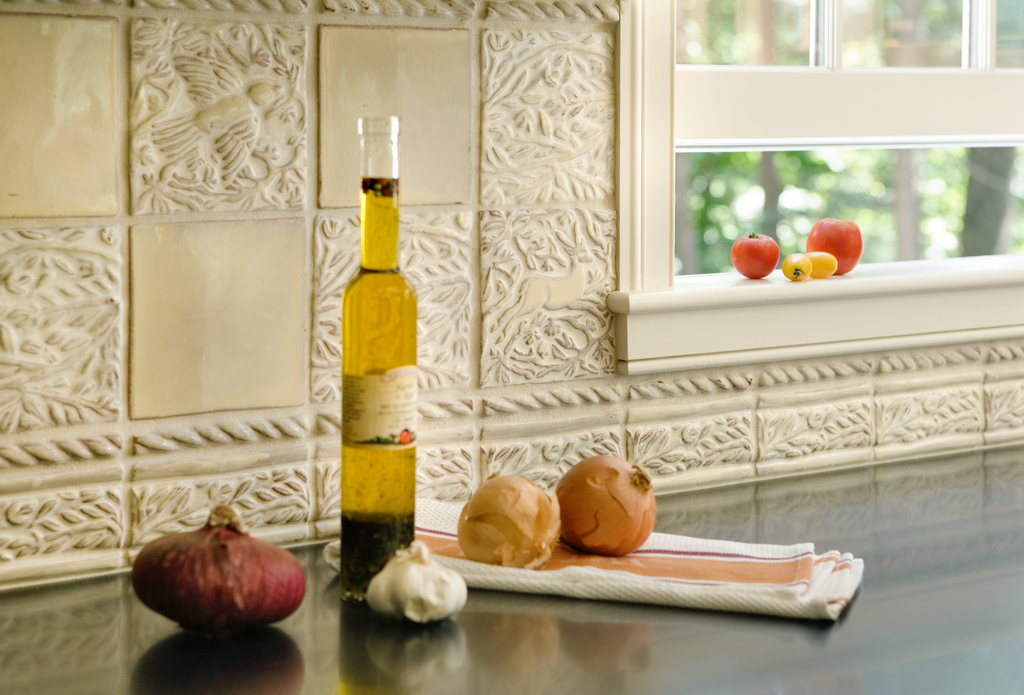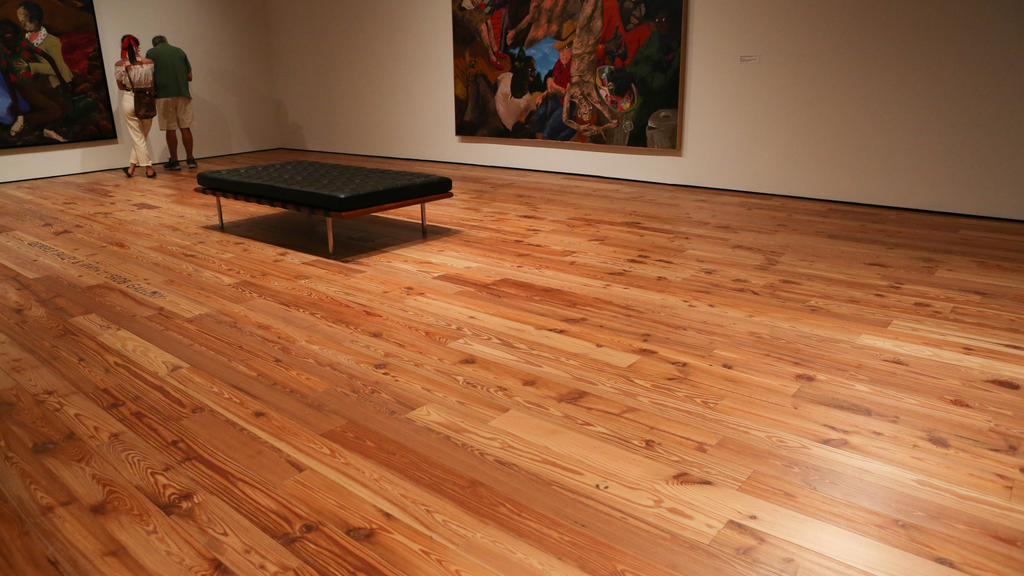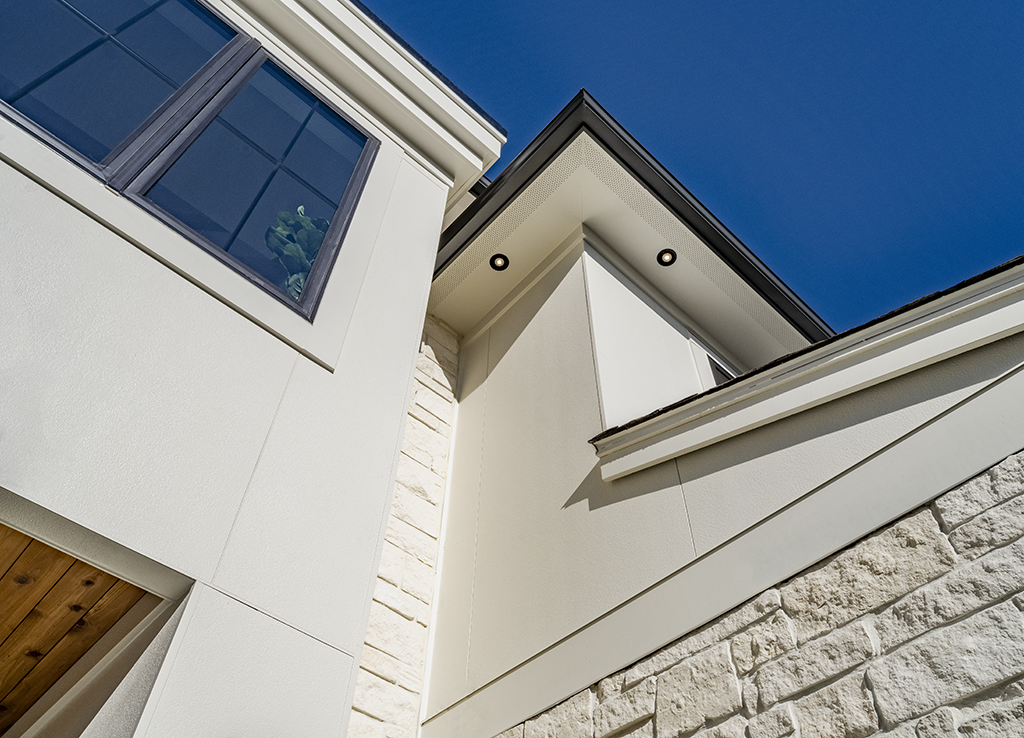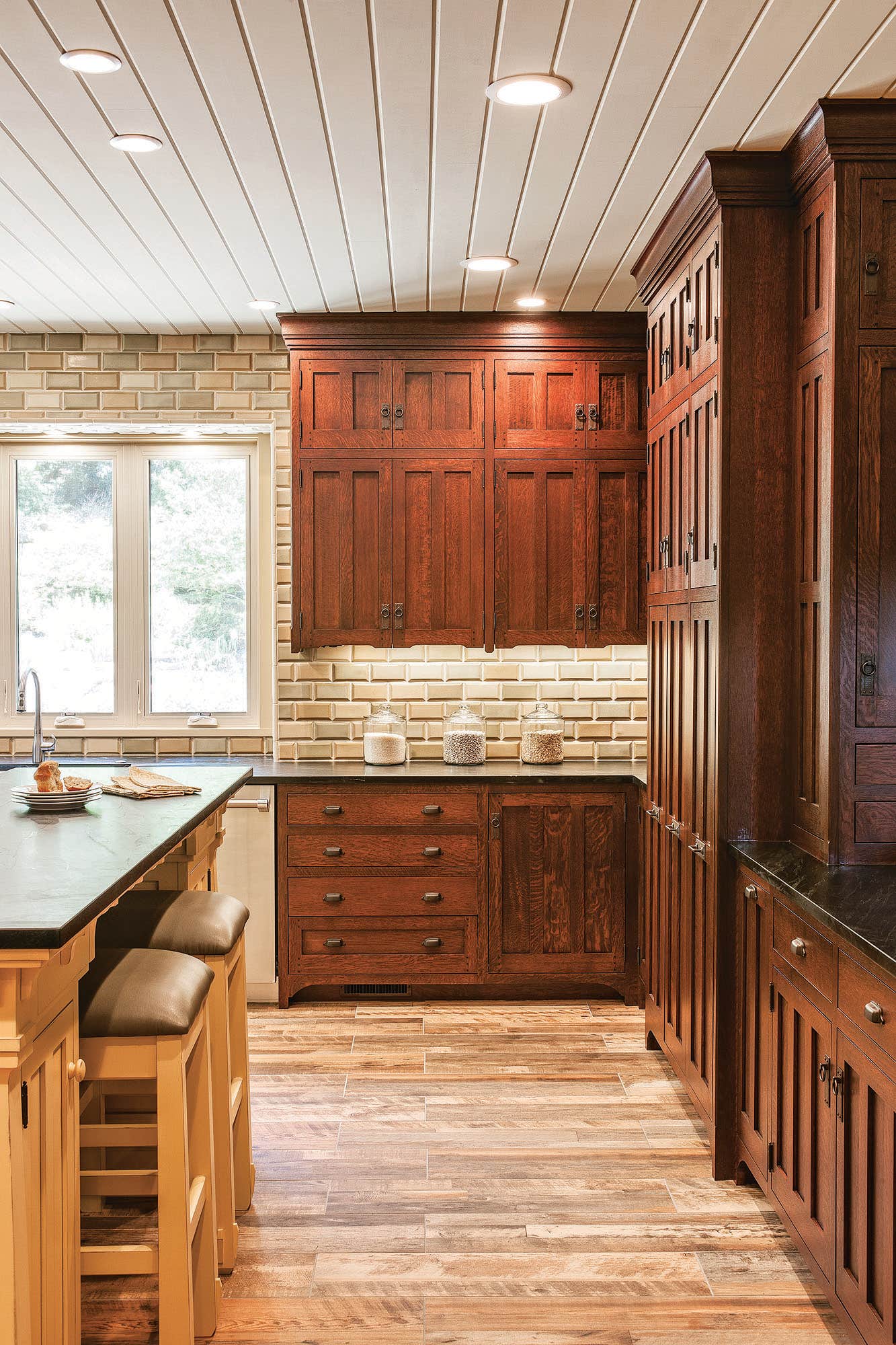
Woodwork & Reports
Classic Cabinets
Kitchens of all kinds are the center of a home, but in period houses, they’re even more a mélange of some intense design interests. Architects, designers, and homeowners have long tried to balance the needs of modern cooking and lifestyles with a space that looks of-a-piece with a traditional building or historical décor. Recently, a fresh batch of ingredients—some new, some familiar—have been added to the recipe with tasty results, as experts explain.
At Crown Point Cabinetry in Claremont, New Hampshire, Melissa Bean says they’re widely recognized for their inset cabinets and period styling, nationwide from Bermuda to Alaska. “Our clients look to us for all styles—Victorian, Arts & Crafts, and Modern, slab-door design,” she says, “and that can be demographic-driven.” For instance, Victorian is popular in New England, “and the West Coast has a reputation for Arts & Crafts, with that flat panel and a little more flair in some of the brackets.” She also does a lot of work with flat, veneer cabinets for apartments in Boston and New York City.
James Stewart of The Kennebec Company in Bath, Maine, explains that their specialty is working with clients to match the architecture of their home and their lifestyle through a high level of craftsmanship. “They come to us for our approach to period architecture—making a kitchen look like it was always intended to be there—and the trend seems to be people restoring late-Victorian and Arts & Crafts style homes.” He says while the majority of their market is New England and the Mid-Atlantic states, they too work nationally with noteworthy pockets in Chicago and the West Coast.
For Rosewood Custom Cabinetry & Millwork, Inc. in Killingworth, Connecticut, Paul Carlson describes their expertise as millwork for the highend residential market—often the whole house—as well as architectural restoration work, most frequently in the lower New England states. “We’re known for doing the kitchens and pantry areas, as well as studies, libraries and the like, for the most part in traditional styles, but we’re starting to get more into Modern, which I am enjoying.”
COMING ON CLEAN
Indeed, one of the most surprising developments in period kitchens—the very source the face-frame cabinet revival in the 1980s—is the way frameless, European-style cabinets are now finding a seat at the traditional design table. “There are Mid-Century Modern homes here in New England,” says Stewart. “In fact, one client who owns mid-century furniture wanted to emulate it in her kitchen, so we used plain-sawn red oak, cut and finished to mimic teak in a kind of International-style look, very clean.”
Bean too sees the growing appeal of a Modern/ International/Euro aesthetic. “Those bigger cities like New York and Boston go for that sleek, flat look—the frameless, overlay cabinet where the door sits on top of the box.” She says most doors are MDF (medium density fiberboard) with a veneer, “clean and compact.”
Carlson adds that they still do face-frame construction and inset doors on traditional door hinges, “but what we’re seeing more of is contemporary European box construction—that is, . inch-thick boxes with full overlay doors.” The boxes are just stacked together with some embellishments top and bottom. “Panels are flat, veneer or paint-grade wood, but very clean.”
“Clean” then may be the cabinet du jour, and a seeming about-face for period kitchens but, truth be told, they’ve been headed there for a while.
Carlson recalls seeing a change about five years ago. “The beaded edges started disappearing from the face-frame door openings, and panels in doors or finished-ends went from, say, ogee or quarter-round to square-edged with a flat panel— a cleaner, more ‘Shaker’ style.” About the same time, hardware shifted from traditional, exposed butt hinges to Euro-style, hidden hinges. “So, you had a traditional appearance, but you didn’t see the hinges—just the handles or pulls.”
Bean notes that Shaker kitchens themselves have long been a sort of historical minimalism. “When people ask for Shaker, they want a flat panel, a square inset, and a little cleaner and more downplayed look than an Arts & Crafts style cabinet.” She adds that even in California, the nirvana of Arts & Crafts architecture, Arts & Crafts style kitchens have been more restrained, without the big brackets and mouldings seen in the past.
In his market, Stewart notes that when clients say Arts & Crafts, they’re talking about “lots of quartersawn oak.” His company produces the chocolatey brown of fumed furniture with a combination of stains and dyes that gives a nice, deep look and brings out the life of the wood. “It has a slight variation of color—not distressed, but not crispy new or homogenous either, like some modern finishes.”
ANY COLOR SO LONG AS IT’S GRAY
What’s unmistakable in kitchens contemporary and period alike is the conquest of a single color—or technically, lack of color. “Gray is huge right now,” reports Bean, “whether it’s a soft gray for the whole kitchen, or just an accent color in part of the room to give a bit of pop to an otherwise white, traditional kitchen.” She cites two recent kitchens with a gray island or a gray hutch. “In quarter-sawn white oak, we wipe on a gray stain so that the wood grain shows through—beautiful!” Stewart agrees. “It’s very much a trend that’s finding its way into period homes. People want gray paint where, five years ago, that would have been a historic white, or even a yellowish white. Now it’s trending gray and grayish blue.”
Quips Carlson, “If the architects had their way, kitchens would be every shade of gray.” He says the majority of his work gets painted white, or some shade thereof, but the rest is color all over the place. “They could go to a cobalt blue or lime green, but usually just one single color. I’ve seen it all.” Though Rosewood typically delivers cabinets just primed, he sees many of them finished in an all-white or near-white kitchen scheme. “It’s almost as if the owners/designers/ architects want the white millwork to blend into the kitchen so that the other finishes—such as stone countertops or back splashes—stand out.”
The other finish that seems to be surfacing everywhere is recycled woods. “Those old, rusticlooking, antique woods – antique heart pine, antique chestnut—are all coming back,” says Bean. “They’re beautiful, and they have a special character—that wormy, nail hole kind of look, for instance.
Stewart agrees. “We’ve seen a resurgence of white oak in more traditional finishes,” he says. For a classic example, he finds quarter-sawn oak being used in Victorian-style cabinets with golden-colored finishes, brass hardware, raised panels, and a little bit heavier mouldings. “That being said, we’ve also seen a surge of white-washed quarter-sawn oak, which is in all the magazines right now.”
“Reclaimed white oak is huge now too,” says Carlson, who just completed a 1 -1/2-inch thick white oak top for a 6-foot by 9-foot island. “Reclaimed materials are very popular at the moment, but white oak seemingly even more than say chestnut.” To that point, he adds nickel-gap. “All it is ship-lap boards, typically horizontal. It could be reclaimed oak, paintgrade solid wood material, MDF, or barn board— mostly horizontal, but with a very pronounced gap the thickness of a nickel. It’s all the rage.”
In fact, with the right place and budget, you can get nifty woods and gray all in one. “I just did a house in Alaska with Western Red Cedar,” explains Bean. “The wood starts out reddish with a little yellow, but if you don’t treat it, in time it turns gray – and that’s what these clients wanted: cabinetwork that ends up looking like a weathered piece of wood.” She adds, “I’ve done quarter-sawn white oak to look like a piece of driftwood—so, it’s that gray.”
And woods do not have to actually be antique to appear from another age. Says Stewart, “In Georgian-style homes all over New England we’re putting in a lot of our hand-planed pine kitchens, both stained and painted. Even in newer homes, people like the texture of hand-planed wood and the appeal of craftsmanship in pegged door construction and finished ends that are either hand-planed paneling or beadboard.”
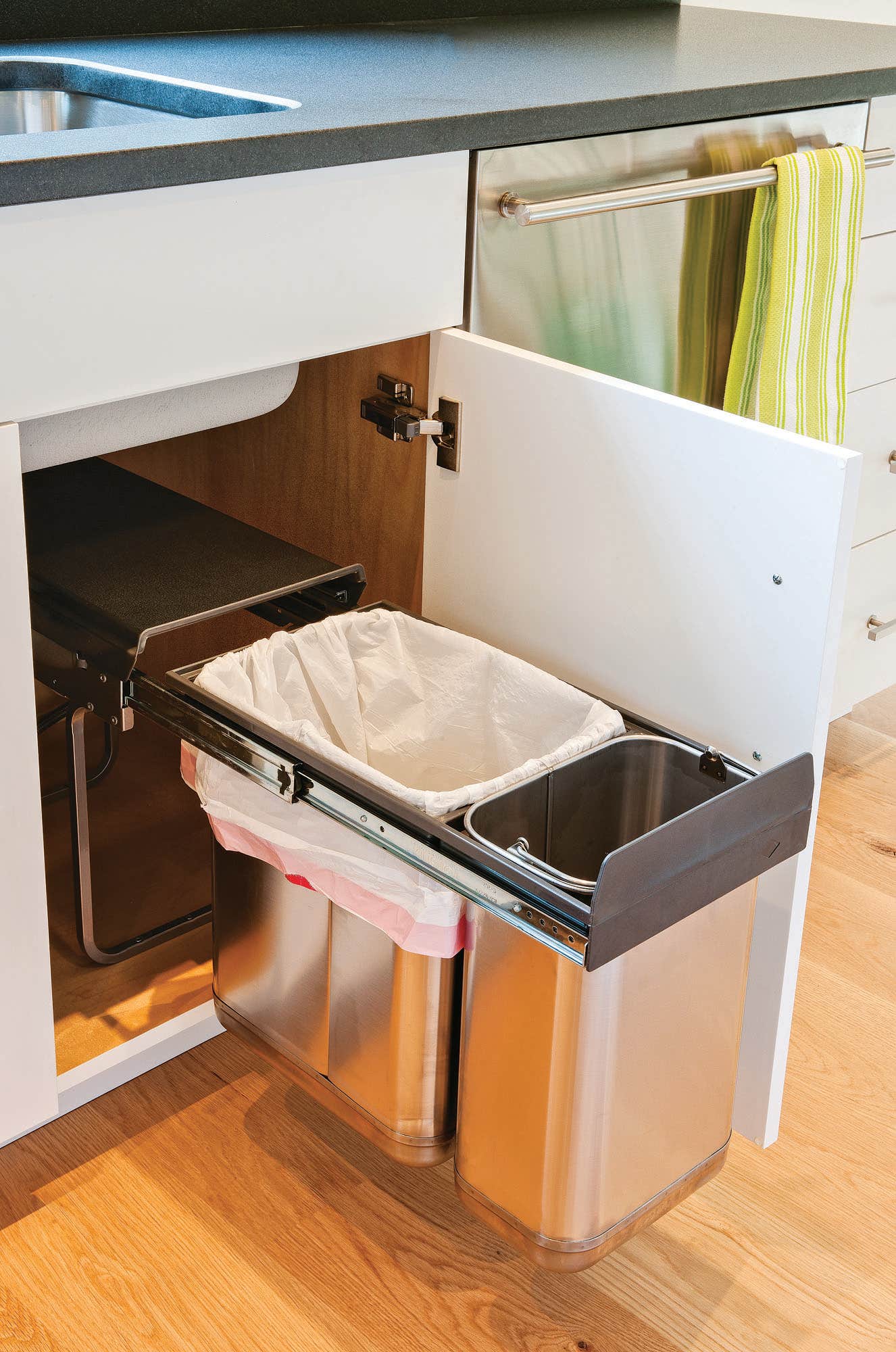
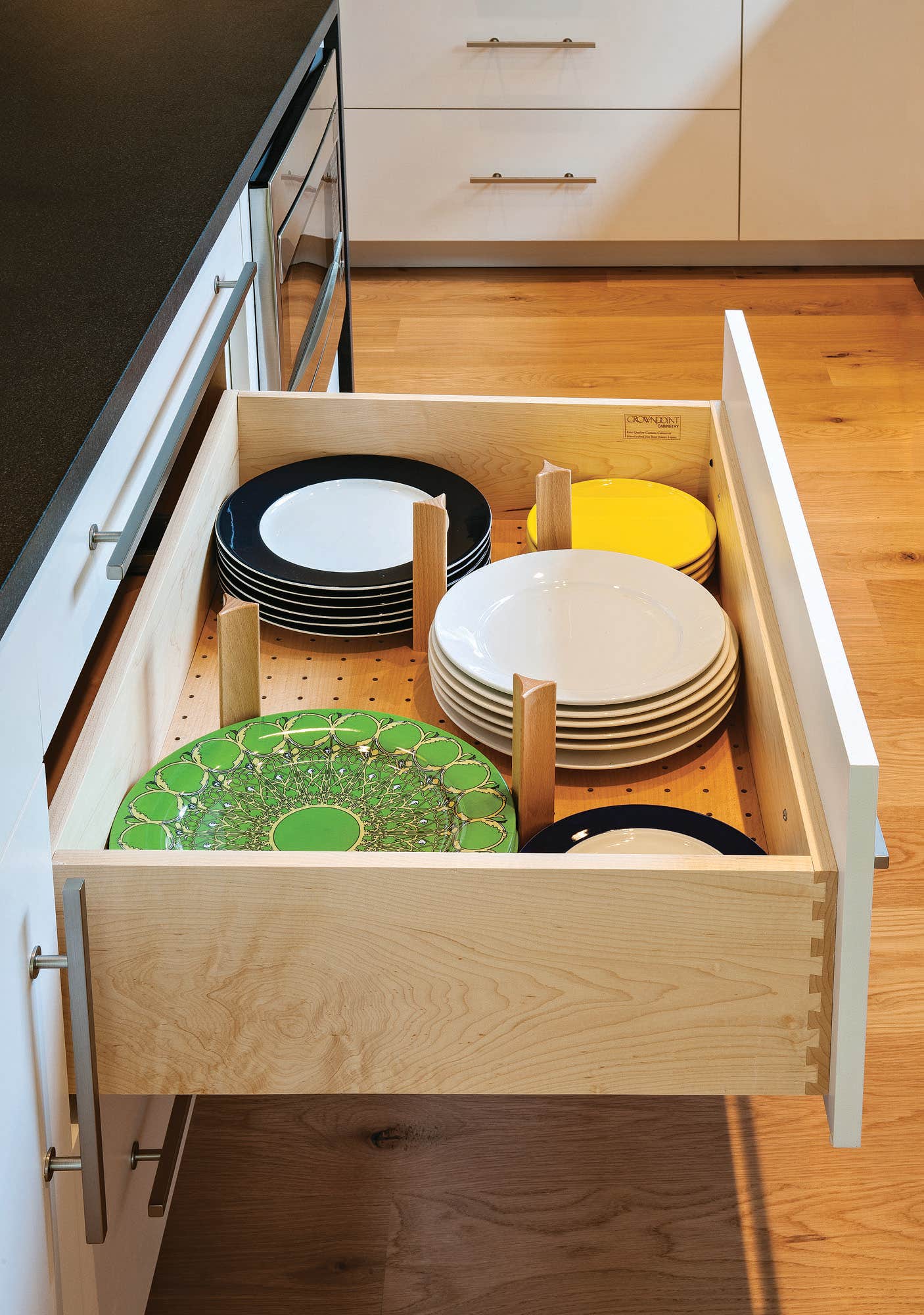
CABINET CONCEITS
In the past—like the 1990s—period house owners obsessed over any modern intrusion on their traditional kitchen confection by hiding refrigerators, dishwashers, and trash mashers behind clever site-made cabinetry. “People have loosened up a bit on that,” says Stewart, “because manufacturers are making more beautiful appliances that really integrate with the cabinets—even if the appliances look modern.” This is especially true with refrigerators, he feels, but dishwashers are a slightly different story. “Because of their prominence right next to the sink—the focal point in the kitchen—I think a panel is very important on a dishwasher.” The reason, he says, is to not upset the cabinet symmetry at the sink—cabinets at either side—by looking at an appliance front. “At the very least, we convince our clients to go with a panel front.”
Bean agrees—about major appliances at least. “It’s the toaster, the blender, the microwave they’re hiding, in a drawer or a bread garage.” Clients are okay with having the dishwasher or refrigerator show, she says, but they want their countertops empty. “They choose a cabinet that comes down to the countertop, which either lifts up, or opens up with doors, so they can pull out the toaster, blender, or mixer, then hide them behind closed doors that look like a full cabinet when they’re done.”
Sometimes the reverse is true. “If people have collectibles they want to show off—bowls, say, or pitchers—they do a lot of glass in their upper cabinet doors.” Otherwise, she says, it would be a wood panel with a glass piece at the top. “We do a lot of doors where there’s a flat wood panel with a glass over to provide a little bit of glass, then put some lighting in the cabinet to accent a piece up there.”
The fitted approach, so much a part of the country kitchen look of the 1990s, is another counter- intuitive, but still useful, concept. As Stewart explains, a lot of people want to enlarge their kitchen “not over-the-top large, but so multiple people can work without stepping on each other.” How to retain the feel of the original space? “Instead of wall-to- wall cabinetry in a big space, which would look abnormal, you can use furniture pieces and the fitted look, where you change counter heights, cabinet heights, and cabinet depths—mix it up.”
Drawers are becoming even more important than doors of late, regardless of cabinet style. “People don’t want to lift plates up over their heads into an upper cabinet,” says Bean, “so we’re doing a lot of plate holders in drawers.” Even the microwave gets its own drawer these days. “This is just a drawer underneath the counter where you push a button, it opens up, and you place things down into it; gets it off the counter and avoids lifting.”
Carlson too sees drawers on the move. He notes that not long ago, the pattern for Eurostyle cabinets was mostly doors above and below the counter, with a short row of drawers above the lower doors. “ Then it became doors/lift-ups above and doors below, with pullout drawers behind the lower doors. Now they’re starting to get rid of the lower doors altogether, and I would say in 75 percent of these cabinets, the lowers are all drawers and the doors are gone, except for under a sink.”
Hardware can help make it happen. Eurostyle hardware is hidden, so there’s no mortising. Plus, there are new breeds of drawer inserts designed for storing silverware, cups, and measuring equipment in top drawers, and stacking plates and dishes in lower drawers. Says Carlson, “With the evolution in new hardware, you can even build a kitchen that looks traditional, but with many of the modern conveniences available, so you can have the best of both worlds.”
Gordon Bock, co-author of The Vintage House (www.vintagehousebook.com), is an in-demand speaker for courses, seminars, and keynote addresses through www.gordonbock.com.




